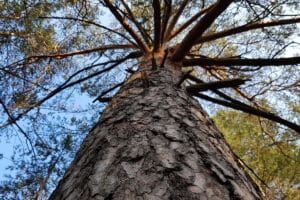The consensus opinion of those attending the 6th Timberland Investment World Summit in New York last week was that consensus about the future of timberland returns was not something on which we could all easily agree. The days of straight-line extrapolations assuming fixed rates of growth and everything else may have passed.
LANDFLIP.com and LANDTHINK.com were media partners with the conference sponsor, International Quality & Productivity Center.
Timberland returns for the two decades beginning in 1987 exceeded stocks and were negative in only one of those years, 2001. (See www.ncreif.com, Click on timberland returns.) Timberland returns during these years were strong despite variability in timber demand and log prices. Price appreciation in the land offset variability and uncertainty on the timber side. Timberland values were driven beyond the intrinsic value of the timber resource and the bare land by the Higher and Better Use (HBU) premium that resulted from “rebranding” and then reselling timberland as second homes and recreation properties.
In the first three quarters of 2009, timberland returns are very slightly negative. So what might the future hold?
Chip Dillon, the widely respected managing director at Credit Suisse, suggests that timberland prices may resemble a bell curve of sorts over the next 15 years or so. He believes log prices have bottomed in 2009 and they should improve in 2010-2011. The “bright future” he predicts will emerge in 2013 to 2018.
He bases his projection in an emerging market for wood-based biofuels, improvement in the pine-beetle situation in Canada and the demographic push of Baby Boomers buying second homes and retirement places. He believes that the overall U.S. and global economic situation will improve over the next five to eight years, which would be consistent with recent historical cycles.
Dillon, however, warns that the positive Boomer demographics will change in the 2020s when they are in their 70s and not buying houses. He characterizes the years after 2020 for timberland returns as “more challenging” than the next decade.
Others were more pessimistic about the next two or three years, though not about a five-year horizon.
The pessimists were of the opinion that the current financial crisis has brought us into new territory. No one has been through a time like this when the government has printed so much money and taken on so much debt to save the largest financial players –and the economy itself — from failure. The “recovery” of 2009 may not stimulate sustainable growth and in hindsight may be nothing more than a temporary patch that peters out. Continuing job loss and the structural shifts away from manufacturing and middle-class stability question the assumption that consumer spending will take over as a recovery driver. And no one knows how health-care-reform legislation will affect public and private spending. If taxes and health-care costs continue to rise, less money will be available for new house construction, second homes and remodels—all of which will impact timber and timberland prices.
Several money managers I spoke with were concerned over the absence of change in the financial sector that would prevent the type of crisis that befell us a year ago. They pointed in particular to the lack of a line between commercial banks and investment banks, which promotes risk; lack of use of the Prompt Corrective Action law that can be used to deal with undercapitalized banks; Bush-era laws that immunized securitizers from lawsuits and allowed a type of derivative — “naked credit default swaps” — that was risky and speculative beyond reason; lack of federal prosecution of those in the biggest banks who behaved negligently and fraudulently; and lack of new regulations to address the mess. The same thing could happen again, they said. (www.villagevoice.com, “No Justice,” by James Lieber, 10/18-11/03, 2009.)
My sense of things is that timberland investments for individual investors need to be looked at in a three-to-five year horizon.
For large institutional investors — endowments and pension funds — timberland returns are likely to be less volatile than stocks over the long term. Even though some traditional markets may decline, or appear to decline, new markets for wood products and new types of trees may more than make up for the slack. Trees with very short rotation cycles are plantation-grown in the tropics today, and bio-engineers are working on cold-hardy cousins. A eucalyptus that could be grown in the American South on a seven or eight-year rotation would change a lot of forecasts about energy prices and the future of timberland values in that region.
For individual investors and smaller players, I think timberland has to be pegged at current timber values, with value in the dirt varying by location and real HBU potential in a constrained market. I advise looking for timberland now, because prices are being corrected down in light of lower stumpage and log prices. I’d screen out parcels that didn’t have at least 50 percent of the purchase price in merchantable timber unless the objective is setting up a Roth real-estate IRA with a 20-to-40-year horizon. I would be patient in timing the sale of the merchantable timber and make sure that the next harvest improves the stand for the future by taking culls.
Of course, you can say, “What does Seltzer know?” And you’d be dead right.
This content may not be used or reproduced in any manner whatsoever, in part or in whole, without written permission of LANDTHINK. Use of this content without permission is a violation of federal copyright law. The articles, posts, comments, opinions and information provided by LANDTHINK are for informational and research purposes only and DOES NOT substitute or coincide with the advice of an attorney, accountant, real estate broker or any other licensed real estate professional. LANDTHINK strongly advises visitors and readers to seek their own professional guidance and advice related to buying, investing in or selling real estate.









Curtis:
This is a great article! There are soo many opportunities to invest in all kinds of land now. Do you think that investing in land that already has a dedicated purpose of development or use such as timber growth is the best way to go?
thanks,
Thomas
That’s too broad a question for me to answer sensibly. Timberland is almost always a local play, so the investment metrics will usually be driven by site-specific and local marketing factors. Sorry that I can’t do better.
Curtis, where do you sell land? carolyn